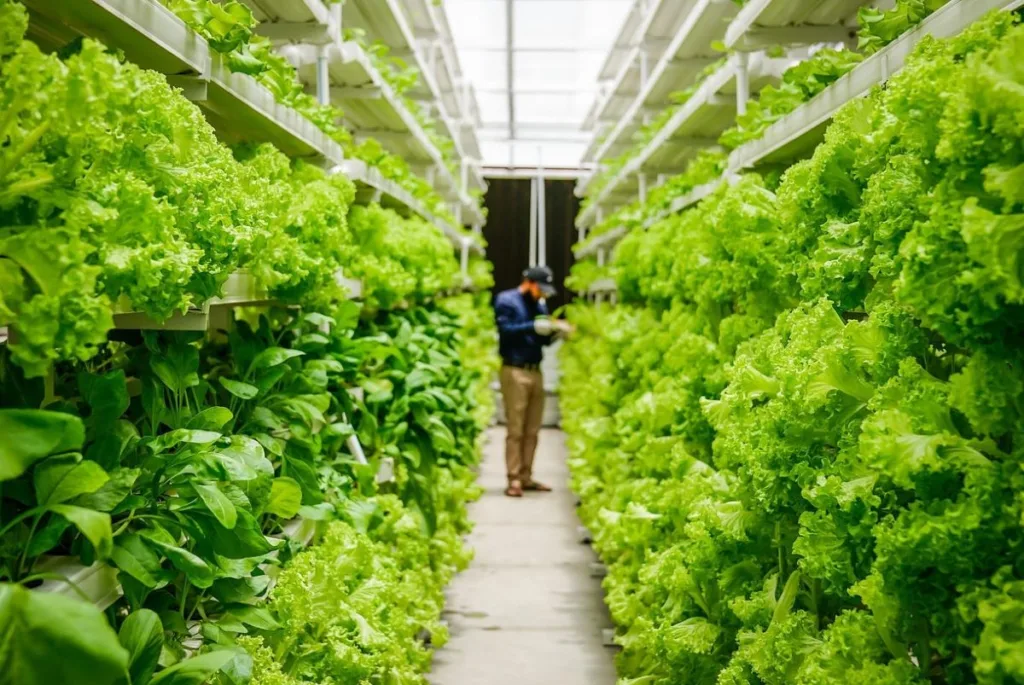The global population is steadily growing, and with it, the demand for food is also increasing exponentially. However, the availability of fertile farmlands is decreasing due to urbanization, soil degradation, and other environmental challenges.
This has prompted the exploration of innovative farming techniques, including vertical farming, to address the impending food crisis. In this article, we delve into the concept of vertical farming, its various forms, benefits, challenges, and its potential to revolutionize the agricultural landscape.
Need for Innovative Farming Techniques
Traditional farming methods are facing limitations due to factors such as shrinking agricultural land, depletion of soil quality, and erratic weather patterns. As a result, countries with geographical and climatic constraints are seeking alternative solutions to ensure food security. This is where vertical farming comes into play, offering the promise of year-round, efficient, and resource-conserving crop production.
Understanding Vertical Farming
Vertical farming is a cutting-edge approach that involves cultivating crops in stacked layers, utilizing vertical space to maximize output. Unlike traditional farming, vertical farming is not constrained by seasonality or climatic conditions, as it can create controlled environments conducive to optimal crop growth. This method has gained traction due to its potential to yield higher harvests with fewer resources.
Diverse Forms of Vertical Farming
Vertical farming can be implemented in various settings, each catering to specific needs and conditions:
- Indoor Farming: Indoor vertical farming involves growing plants within controlled environments, often employing hydroponic systems and artificial lighting. This technique minimizes water consumption, eliminates the need for pesticides, and enables organic produce cultivation.
- Greenhouse Farming: Greenhouses provide sheltered spaces for crops, shielding them from harsh weather and pests. These structures maintain favorable growing conditions, allowing for extended growing seasons and increased yield.
- Container Farming: Container farming is an innovative variant of indoor farming that repurposes shipping containers for cultivation. This approach is adaptable and can be established in diverse locations, addressing spatial limitations.
Soil-Free Techniques in Vertical Farming
Vertical farming employs three primary soil-free techniques:
- Hydroponics: Plants are grown in nutrient-rich water solutions without soil, optimizing nutrient uptake and minimizing waste.
- Aeroponics: Crops are cultivated in an environment where their roots are misted with nutrient solutions, eliminating the need for soil or water.
- Aquaponics: A symbiotic relationship between fish and plants is utilized to grow crops. Waste from fish provides nutrients for plant growth, while plants purify the water.
Crop Diversity and Benefits
Vertical farming can yield a wide range of crops, including lettuce, chard, strawberries, and herbs like basil and mint. The benefits of vertical farming extend beyond crop variety:
- Optimal Space Utilization: Vertical farming, in combination with hydroponics, uses significantly less land compared to traditional agriculture. The compact growth allows for efficient land utilization.
- Water Conservation: Hydroponics consumes less water than conventional farming, making it a sustainable choice in water-scarce regions. The controlled environment reduces water wastage through evapotranspiration.
- Increased Yields: Controlled climates in vertical farms lead to consistent, year-round crop production. Protection from pests and weather-related challenges results in higher yields.
- Reduced Labor: The technology-driven environment of vertical farms requires less manual labor compared to traditional farming methods.
- Shortened Supply Chains: Vertical farming can be established anywhere, minimizing transportation and storage costs. Consumers gain access to fresher produce.
Global Adoption and Pioneering Efforts
The United Arab Emirates (UAE) stands as a pioneering example of embracing vertical farming to combat food security challenges. With 90% of its food imported, the UAE has initiated hydroponic vertical farms to attain self-sufficiency. The COVID-19 pandemic underscored the importance of domestic food production, spurring the government’s support for agritech solutions.
Singapore is also investing heavily in vertical farming, addressing land and water constraints. Countries like Japan, India, the US, and the UK have embraced hydroponic farming to increase their annual yields.
Challenges and Road Ahead
Despite its potential, vertical farming faces hurdles that limit widespread adoption:
- High Initial Costs: Establishing vertical farms requires significant investments, leading to extended payback periods.
- Disease and Pest Management: Shared nutrient reservoirs in hydroponics can facilitate rapid disease and pest spread.
- Energy Consumption: Controlled environments demand substantial energy, increasing operational costs and environmental impact.
- Crop Limitations: Not all crops are suited for indoor cultivation due to size constraints.
Future Prospects
As the global food landscape evolves, the integration of technology and sustainability becomes imperative. Vertical farming, with its promise of efficient resource utilization and year-round production, aligns with these evolving needs. Companies like CambridgeHOK and Inno-3B are spearheading innovative solutions, steering the industry toward broader acceptance and scalability.
In conclusion, vertical farming emerges as a transformative solution to the challenges of traditional agriculture. Its potential to produce more with fewer resources, create sustainable supply chains, and address food security concerns makes it a viable contender in shaping the future of farming.

